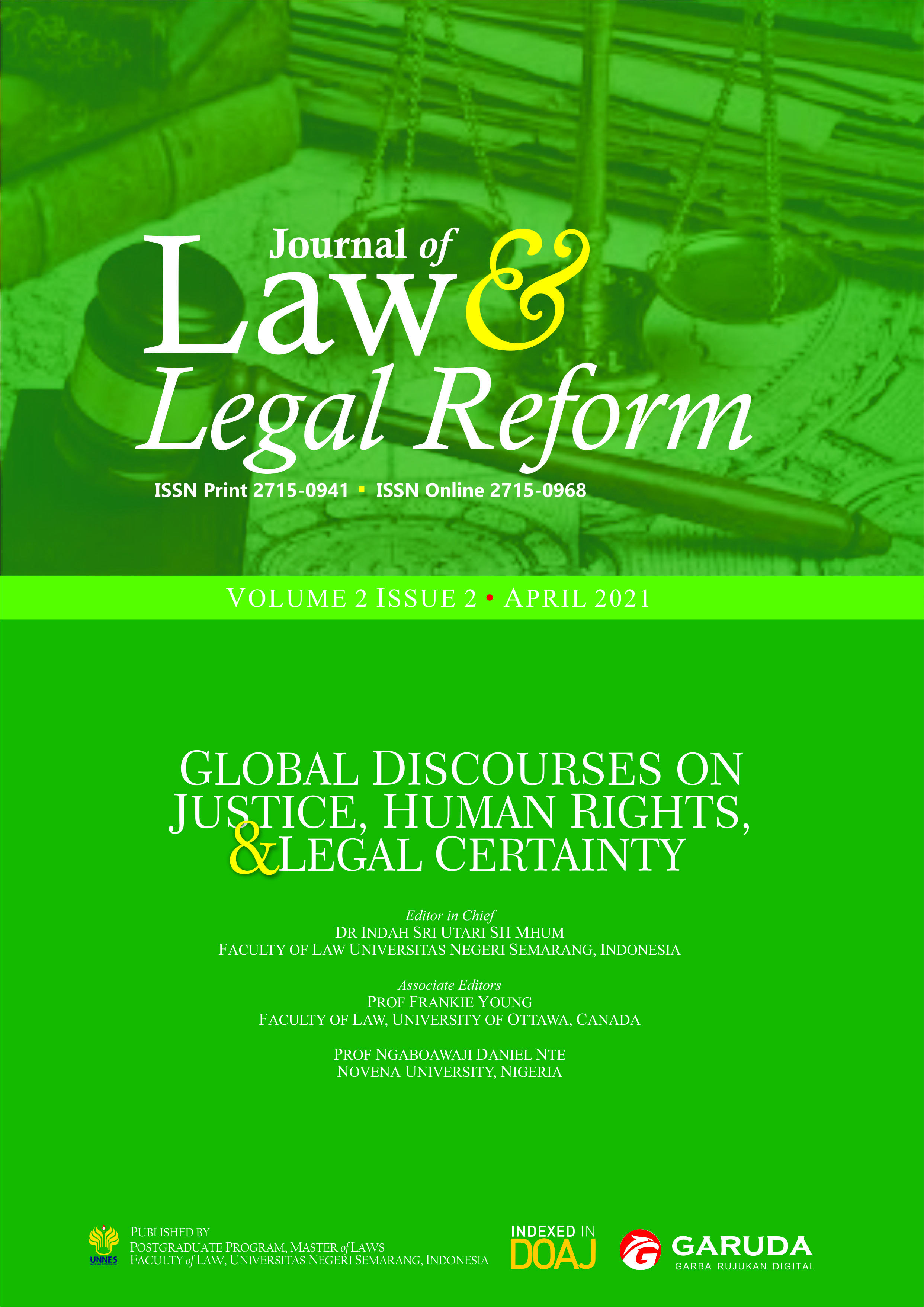Lifetime Imprisonment in the Perspective of Human Rights
Main Article Content
Abstract
Lifetime imprisonment applied in Criminal Justice System in Indonesia and it raised pros and cons in the practices. However, this kind of punishment has a long time history for Indonesian criminal law. On the other side, this punishment often criticized by legal experts especially related to human rights. The Republic of Indonesia has guaranteed the protection of human rights, based on the provisions of the law, and not including the will of a person or a group that can be the basis of power. In this case, the 1945 Constitution has regulated the human rights that have been enshrined and described in article 28 letter A to article 28 letter J. therefore, the certainty in the article can be attributed using Law No. 39 of 1999 on Human Rights which explains that everyone has the right to live in a peaceful, secure, and peaceful society and state that respects, protects, and fully implements human rights and basic human obligations as regulated in this law. The implementation of life sentence decisions in the Indonesian legal system contradicts human rights, namely the right to live independently in accordance with the values ​​of pancasi1a and the 1945 constitution. In the criminal system in Indonesia, life imprisonment is one of the alternatives to the death penalty. Lifetime imprisonment is related to the subsidiary function which is a substitute for a criminal who is punishable by a maximum death penalty. The punishment is the classification of criminal sanctions that can be selected in its implementation.
Article Details
All writings published in this journal are personal views of the authors and do not represent the views of this journal and the author's affiliated institutions. Author(s) retain copyrights under a Creative Commons Attribution-NonCommercial-ShareAlike 4.0 International (CC BY-NC-SA 4.0).
References
Anonym. (2009). KUHP dan KUHAP. Jakarta: Sinar Grafika.
Muladi, M., Arief, B. N. (1984). Teori-Teori dan Kebijakan Pidana. Bandung: Alumni.
Nandang, N. (2010). Pembaharuan Sistem Pemidanaan anak di Indonesia. Yogyakarta: Graha Ilmu.
Prodjoodikoro, W. (2003). Asas-Asas Hukum Pidana di Indonesia. Bandung: PT. Refika Aditama.
Republic of Indonesia. (1995). UU No12 Tahun 1995 tentang Pemasyarakatan.
Republic of Indonesia. (1999). PP No. 32 Tahun 1999 tentang Syarat dan Tata Cara Pelaksanaan Hak WargaBinaan Pemasyarakatan .
Republic of Indonesia. (2013). PerMen No 21 Tahun 2013 Tentang Syarat danTata Cara Pemberian Remisi, Asimilasi, Cuti, Pembebasan Bersyarat, Cuti Menjelang Bebas, dan Cuti Bersyarat.
Sudarto, S. (1977). Kapita Selekta Hukum Pidana. Bandung: Alumni.
Sugandhi, R. (1980). KUHP Dan Penjelasannya. Surabaya: Usaha Nasional.
Sunarto, R. (2007). KUHP dan KUHAP, Dilengkapi Yurisprudensi Mahkamah Agung dan Hogee Raad. Jakarta: PT. Raja Grafindo Persada.
Susilo., R. (1988). KUHP serta Komentar Komentarnya Lengkap Pasal Demi Pasal. Bogor: Politeia.
Syaiful, B. (2009). Perkembangan Stelsel Pidana Indonesia. Yogyakarta: Total Media.
Tongat, T. (2004). Pidana Seumurhidup dalam sistem Hukum Pidana di Indonesia. Malang: UMM Press.
Waluyo, B. (2008). Pidana dan Pemidanaan. Jakarta: Sinar Grafika.
